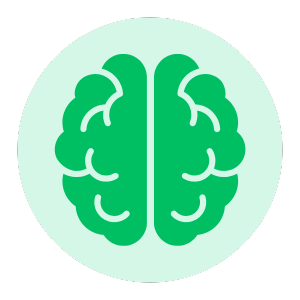Dopamine Addiction Assessment Tool
Evaluate habits and patterns to identify potential dopamine-driven behavioral issues
This self-assessment helps identify possible symptoms of dopamine-driven behavioral addiction (e.g., social media, gaming, shopping, etc.).
Please select the category that best describes you to begin the evaluation.
Male
Dopamine test for adult males
Female
Dopamine test for adult females
Child/Teen
Dopamine test for children/teens
Results are not a diagnosis - consult a healthcare professional for evaluation. © 2025
Dopamine Addiction Assessment Results
Based on your responses, here is your dopamine-driven behavior profile
Key Characteristics
- Self-awareness of habits
- Motivation to improve
- Ability to seek balance
- Responsiveness to feedback
- Difficulties controlling pleasure-seeking behaviors
- Preoccupation with digital or other stimulating activities
- Negative impacts on focus or mood
- Frequent urges or cravings for stimulation
Management Strategies
- Set boundaries for device and app use
- Schedule regular offline breaks
- Practice mindfulness and self-regulation
- Engage in non-digital hobbies
- Counseling or behavioral therapy
- Digital detox programs
- Support groups for behavioral addiction
- Consultation with a mental health professional
Recommended Resources
- Center for Internet and Technology Addiction
virtual-addiction.com | Information and resources for digital addiction - Digital Wellness Institute
digitalwellnessinstitute.com | Tools and education for healthy digital habits - Psychology Today: Behavioral Addictions
psychologytoday.com | Articles and research on behavioral addiction
Select the True Statements About Dopamine
Understanding the role of dopamine in reward, motivation, and addiction
Dopamine is a crucial neurotransmitter that plays a significant role in how we experience pleasure, motivation, and reward. Often called the "feel-good" chemical, dopamine is involved in everything from movement and mood regulation to addiction processes. This comprehensive guide explores the true nature of dopamine, its functions, and its role in addiction.
Related Mental Health Assessments
If you're interested in learning more about how neurotransmitters affect behavior and mental health, consider these assessments:
True Statements About Dopamine
Dopamine is a neurotransmitter, not the pleasure molecule itself
Contrary to popular belief, dopamine is not directly responsible for pleasure but rather motivates us to seek out rewarding experiences. It creates a feeling of desire and anticipation rather than satisfaction.
Dopamine plays a key role in addiction
Addictive substances and behaviors hijack the brain's dopamine system, creating powerful cravings and reinforcing compulsive behavior despite negative consequences. If you're concerned about addictive behaviors, consider taking our dopamine addiction test.
Dopamine receptors are found throughout the body
Beyond the brain, dopamine receptors are present in various organs and systems, including vascular tissues where they help regulate blood flow and pressure.
More dopamine always means more happiness
This is false. While dopamine is involved in pleasure and reward, excessive dopamine activity is associated with addiction, psychosis, and mania rather than increased happiness. Understanding your brain chemistry can be helpful - consider our personality test to learn more about your behavioral patterns.
Dopamine agonists are used to treat Restless Legs Syndrome (RLS)
Dopamine agonists like pramipexole and ropinirole are FDA-approved treatments for RLS, helping to alleviate uncomfortable sensations and urge to move the legs.
Understanding Dopamine and Addiction
Dopamine plays a central role in the development and maintenance of addictive behaviors. When we engage in activities that are rewarding or pleasurable, our brain releases dopamine, creating a connection between the action and the feeling of reward. This process reinforces the behavior, making us more likely to repeat it.
How Addiction Hijacks the Dopamine System
Addictive substances and behaviors can cause the brain to release much larger amounts of dopamine than natural rewards do. This flood of dopamine reinforces the connection between the substance/behavior and the pleasurable effect, leading to powerful cravings and compulsive behavior. If you're concerned about addictive patterns, our substance addiction test can provide insights.
Did You Know?
The brain's dopamine system evolved to help us survive by reinforcing behaviors essential for survival like eating and social bonding. However, this same system can be hijacked by modern addictive substances and behaviors, leading to maladaptive patterns that characterize addiction. Understanding your mental health is important - consider exploring our complete assessment library.
Dopamine Receptors and Their Functions
Dopamine exerts its effects by binding to specific receptors in the brain and body. There are five known types of dopamine receptors (D1-D5), which are classified into two families: D1-like (D1 and D5) and D2-like (D2, D3, and D4) receptors.
Vascular Effects of Dopamine
Beyond its neurological functions, dopamine plays important roles in the cardiovascular system. At different dopamine dosage levels, it can have varying effects on blood vessels and heart function. This is why dopamine is sometimes used intravenously in critical care settings to support blood pressure and cardiac function.
Dopamine in Popular Culture and Education
Recently, experiences like dopamine land: a multisensory experience have emerged to educate people about this important neurotransmitter through interactive exhibits. These installations, found in locations like dopamine land dc and dopamine land nj, aim to help visitors understand how dopamine affects perception and behavior.
Dopamine Versus Dobutamine
While their names sound similar, dopamine vs dobutamine represents an important distinction in pharmacology. Both are catecholamines used in medical settings, but they have different effects on the body. Dopamine acts on dopamine receptors and adrenergic receptors, while dobutamine is primarily a beta-1 adrenergic receptor agonist used to increase cardiac output.
Additional Mental Health Resources
Understanding brain chemistry is just one aspect of mental wellness. Explore these additional resources:
Understanding Your Dopamine System
Dopamine is far more complex than simply being a "pleasure chemical." It plays crucial roles in motivation, movement, learning, and yes—addiction. By understanding how dopamine works, we can better understand addictive behaviors and develop more effective strategies for managing them.
If you're concerned about your relationship with potentially addictive substances or behaviors, consider speaking with a healthcare provider who can offer guidance based on your individual circumstances and needs. You might also find our dopamine addiction assessment helpful in understanding your patterns.
